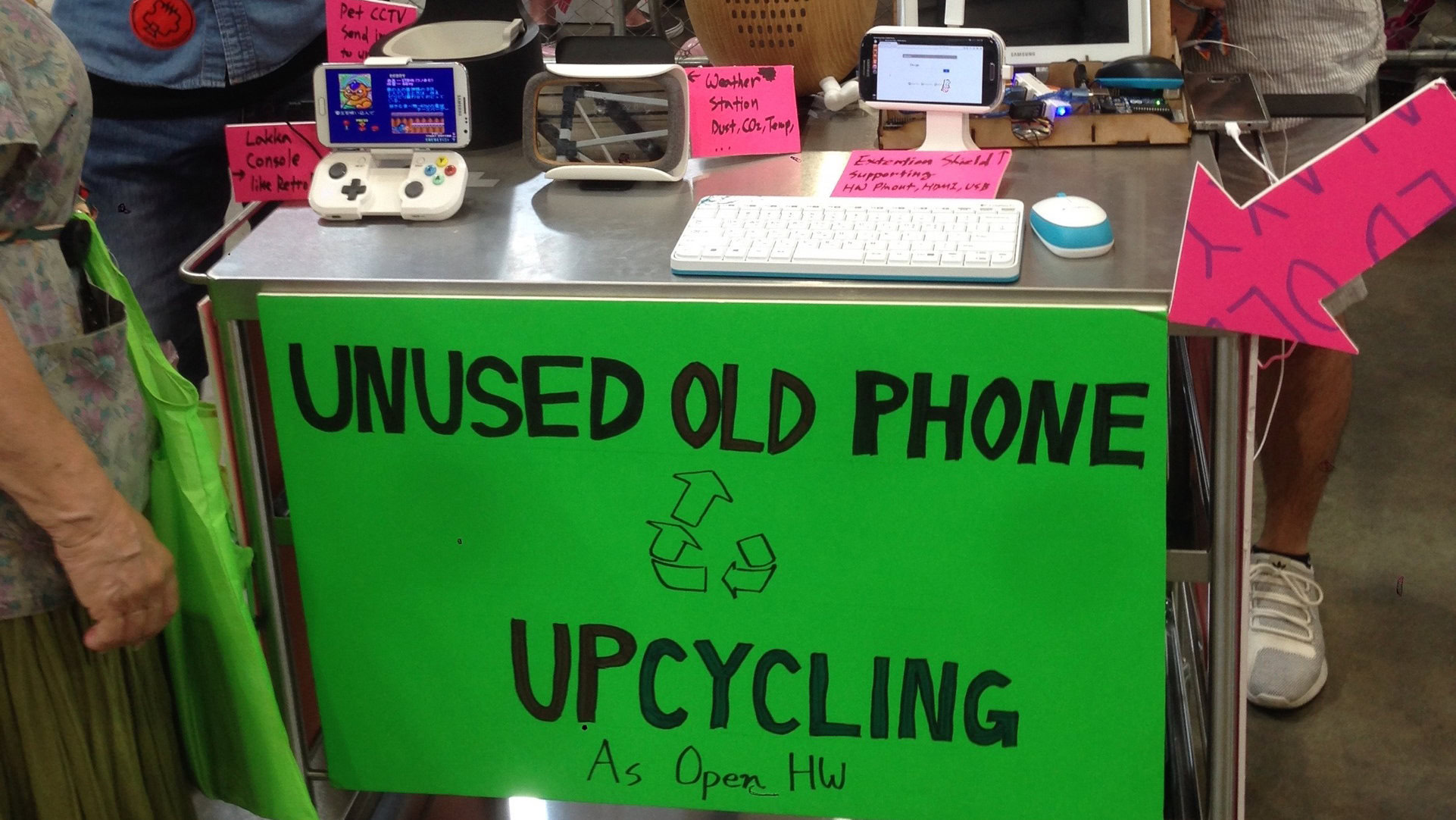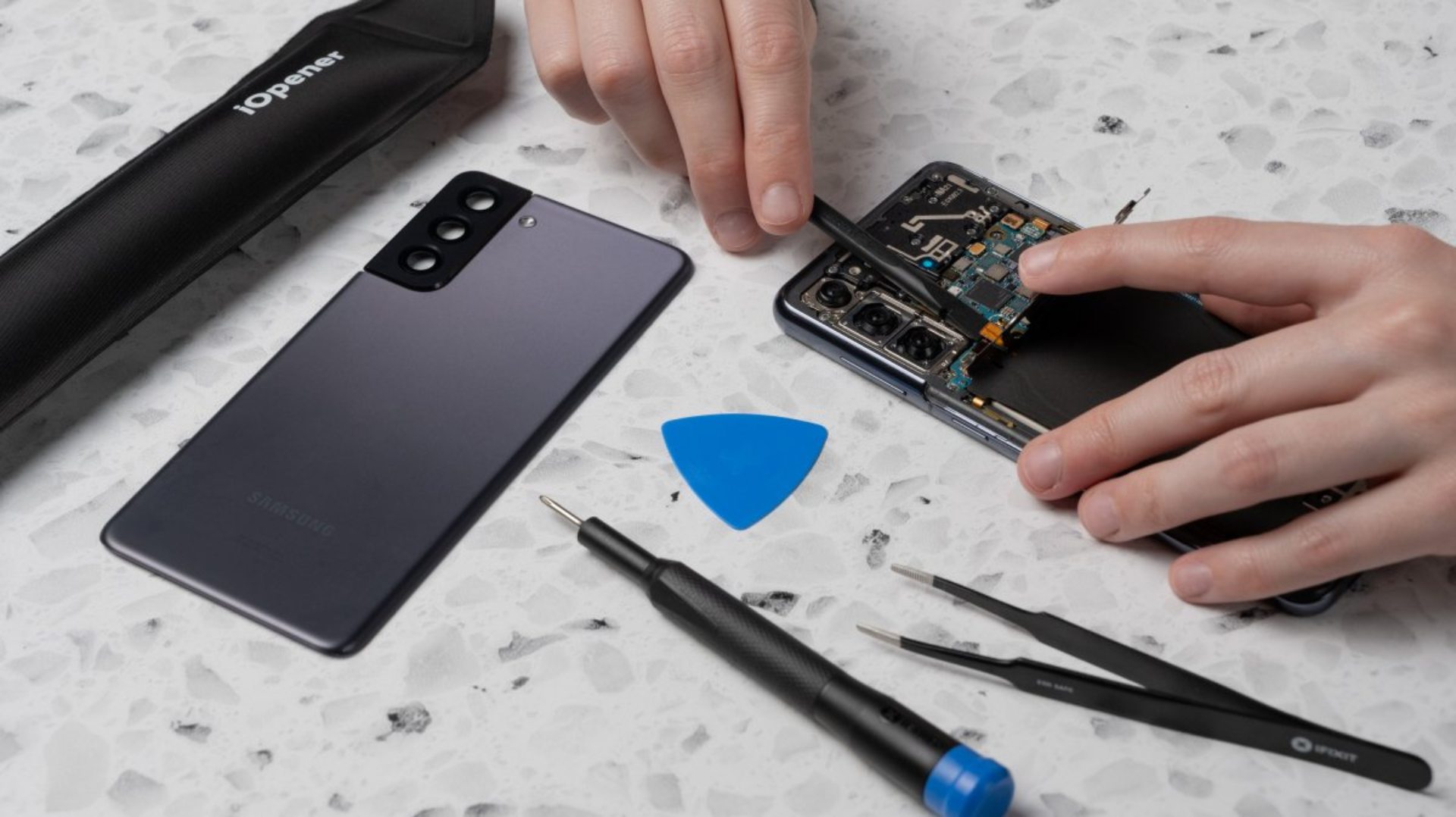Affiliate links on Android Authority may earn us a commission. Learn more.
Downcycled: The story of Samsung's failed deal with iFixit, as told by iFixit's CEO
Published onJuly 27, 2024
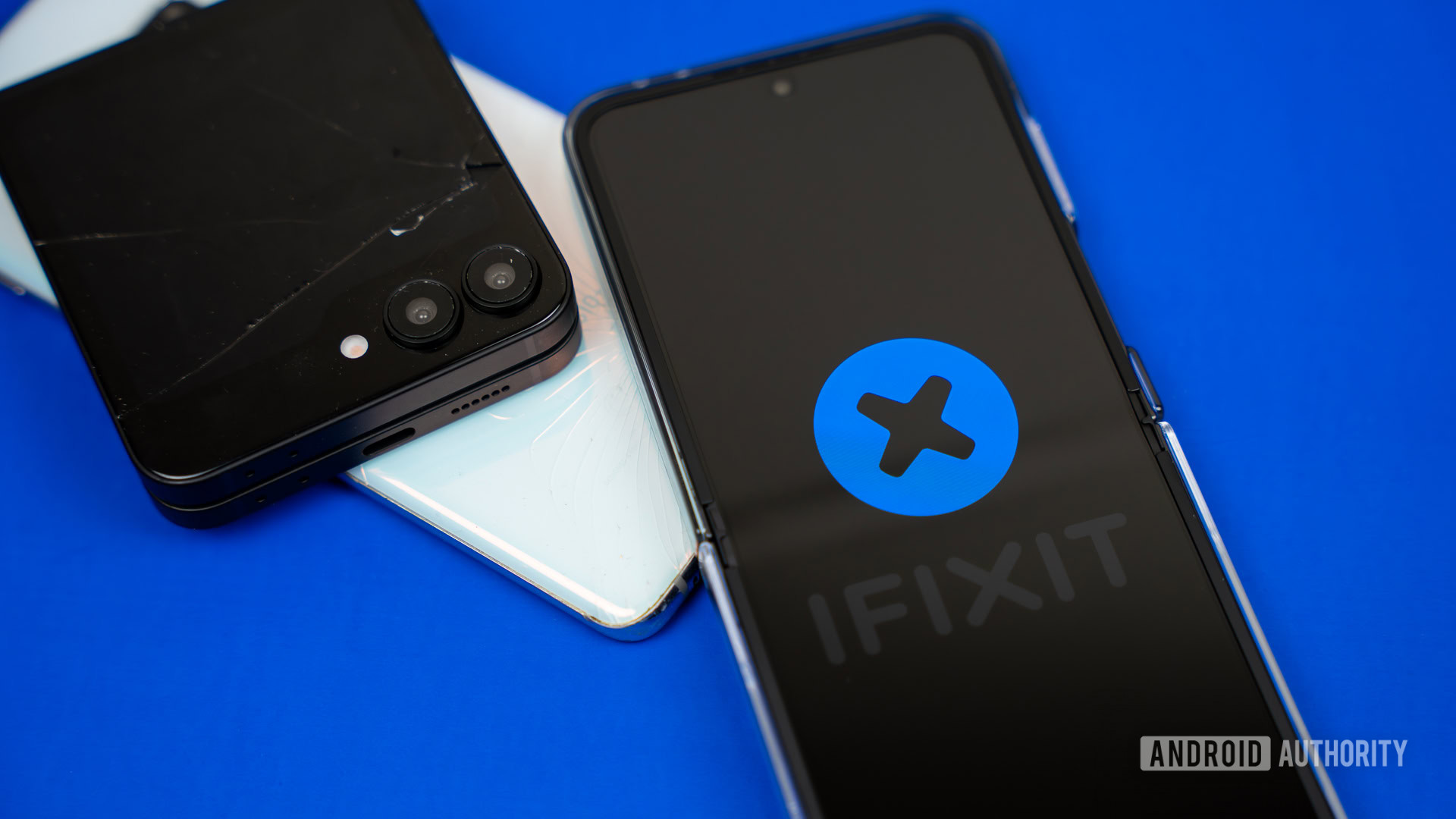
“Never take broken for an answer.” This motto, wrapped around a wrench, is emblazoned on Kyle Wiens’ red t-shirt. Wiens is the CEO of iFixit, one of the most popular destinations for everything you need when it comes to repairing smartphones, tablets, laptops, and more. The shirt — available from iFixit’s online store — is not just touting a clever slogan. For Wiens and everyone else at iFixit, it is a mantra, an attitude that defines everything it does. However, even Wiens himself probably didn’t anticipate how he would be forced to go against this mantra with a recently dissolved partnership with South Korea’s largest company, Samsung, which Wiens is here to discuss with Android Authority.
Wiens sips a Diet Coke and settles in as I start explaining the framework of our conversation. He interrupts me politely to get a big caveat out of the way related to confidentiality terms iFixit still has with Samsung. “We’re generally very open with the press, and I will tell you everything that I can,” he says. “As much as I would love to tell you everything, I’ll let you know when we’re going out of bounds with what I can say.”
With that acknowledged, Wiens dives right into telling me about Samsung, repairing Galaxy smartphones, and how sometimes you actually do need to take “broken” for an answer.
Galaxy Upcycling: iFixit’s history with Samsung
In May 2017, at Maker Faire Bay Area, iFixit’s Chief Tool Officer Eric Essen came across a ramshackle table with two young men promoting an upcycling program for unused old phones. Intrigued, Essen chatted with them about the idea, eventually discovering that, despite the DIY nature of their “booth” (a simple metal table with a hand-written sign taped to it), they were Samsung employees on a C-Lab team, meaning they were pursuing a creative business endeavor with Samsung’s support. Their idea was simple: Take that old Samsung phone that’s collecting dust in a drawer and put it to work by erasing its software and replacing it with a system that allows it to act as something else. They had examples of wiped Galaxy phones working as a full Ubuntu desktop computer, a retro gaming console, and a weather station.
Essen told Wiens about the booth, and Wiens was immediately excited. “This was, I think, one of the best ideas that not only Samsung has ever had, but anyone in the entire device ecosystem has ever had,” Wiens tells me.
He contacted Samsung to express his enthusiasm and was invited to South Korea to meet with the team. There, they showed him working prototypes and laid out the vision for the program as a whole. Even more excited than before, he agreed to promote and back the launch of the final product, dubbed “Galaxy Upcycling.” Later that year, at the Samsung Developer Conference (SDC), Wiens joined Samsung on stage to get everyone excited about the program.
“We announced it, and we demoed it,” Wiens says. “We had a booth with [Samsung] at the conference. We showed it off. It was working. We had all kinds of cool demos.” Those demos included a cluster of Galaxy S5 phones mining Bitcoin, a smart doorbell, and a baby monitor, all created with repurposed Samsung smartphones.
But after the SDC announcement, Galaxy Upcycling suddenly died with zero explanation. Disappointed, Wiens repeatedly tried to get word from the company on what was happening. “Eventually,” Wiens explains, “the folks at Samsung who built it just stopped replying to my emails.”
Despite the promise of Galaxy Upcycling, Samsung killed it at the final hour, and no one knows why.
Wiens says he has no idea why Galaxy Upcycling didn’t take root. His theory is that the original Samsung team got the whole thing ready to launch and then “ran it up the flagpole,” where it was killed by executives. This may have had to do with the idea that you would be removing Samsung’s proprietary software from the phones, which could cause PR problems down the line, not to mention giving the custom ROM community a much easier time at modding Samsung devices, which Samsung has fought for years. Today, the only thing remaining of this program is the name: Galaxy Upcycling at Home is now a wholly different program from Samsung that allows you to perform a handful of smart home functions using an old phone’s pre-existing Android software. Samsung hasn’t made any meaningful announcements on this program since 2021, though.
“I’m still very salty about that one,” Wiens says, shaking his head. “Even when Samsung invents the greatest cool thing, they can’t get out of their own way to launch it.”
With iFixit’s first major partnership with Samsung over before it even began, Wiens went back to focusing on iFixit. Soon, though, Samsung would come knocking on his door again.
A new Samsung partnership begins
Between 2017 and 2022, iFixit developed multiple mutually beneficial repair partnerships with brands, including Motorola, which was the first major smartphone company to sign a deal. These partnerships allowed repair technicians and general consumers to buy parts from iFixit that originate directly from the manufacturer. iFixit also supplies detailed instructions on how to conduct common repairs, which it develops closely with the company that created that product. iFixit makes a small profit on the OEM parts and its branded tool sets, sales of which these repair guides bolster. Meanwhile, the smartphone brand gets some goodwill from the small-but-passionate repair community, a bevy of satisfied customers who are likely to hold onto their device for a longer period of time (and thus be more loyal), and a nice way to beef up its green initiatives.
In early 2022, after years of success with these deals, Samsung unexpectedly contacted Wiens. “Samsung reached out to us and said, ‘We want to enable DIY repair,'” Wiens explains. “We said, ‘Hey, that’s awesome! Let’s do it.’ We got diligently to work behind the scenes to put together all the legal agreements, distribution agreements, and everything else that it takes to be able to launch.”
This is where I stop Wiens. Why did he immediately agree to this after getting burned by Galaxy Upcycling?
Despite the failed Galaxy Upcycling program, Wiens immediately agreed to work with Samsung on DIY repair.
“I guess the siren call of being able to help that many people is significant,” Wiens says, with a heavy sigh. “I mean, if we look at our traffic volume, we see across iFixit what people are looking at wanting to fix, and there’s just a huge volume of traffic to Samsung device repair, so we have thousands of repair guides for their products. And I don’t think it’s sufficient to have a repair guide if I can’t also get you a repair part for the thing. So we’re always going to be in favor of providing parts. So, when Samsung reached out and said, ‘We’ll sell you parts directly, and you can connect them with your community,’ we had to give that a good-faith attempt. And so we put our personal grudge aside.”
The major difference between this proposal and the Galaxy Upcycling program, Wiens explains, is that iFixit had already done this with other brands for years. This wasn’t some far-fetched new moonshot program — it was just a cut-and-paste agreement with a new partner. This made Wiens confident that working with Samsung could be successful.
Unlike with Galaxy Upcycling, this DIY repair partnership was just a cut-and-paste deal, so Wiens felt confident.
Not everyone would share Wiens’ enthusiasm for this rekindled relationship with Samsung, though. The professional and amateur repair community — a huge portion of which are iFixit customers — were wary of Samsung even before the Galaxy Upcycling fiasco. This ill will is based on the company’s reluctance to make its devices more easily repairable, the extensive limitations it puts on getting parts and repair information for its products, and the sky-high prices for the parts it does choose to provide, which are significantly higher than similar parts from other brands — sometimes even Apple. Wiens knew this agreement would not be welcomed with open arms by his core audience.
In the end, though, that “siren call” was enough to convince Wiens to give it another go despite the pushback he knew he would see from the community. “It was my decision,” he says. “I was the one [Samsung] made look like an idiot because I was on stage with them launching this vaporware project [Galaxy Upcycling]. But we gave it another shot.”
In May 2022, Samsung and iFixit formally announced their new partnership. Right off the bat, things were rocky.
Things start to fall apart quickly
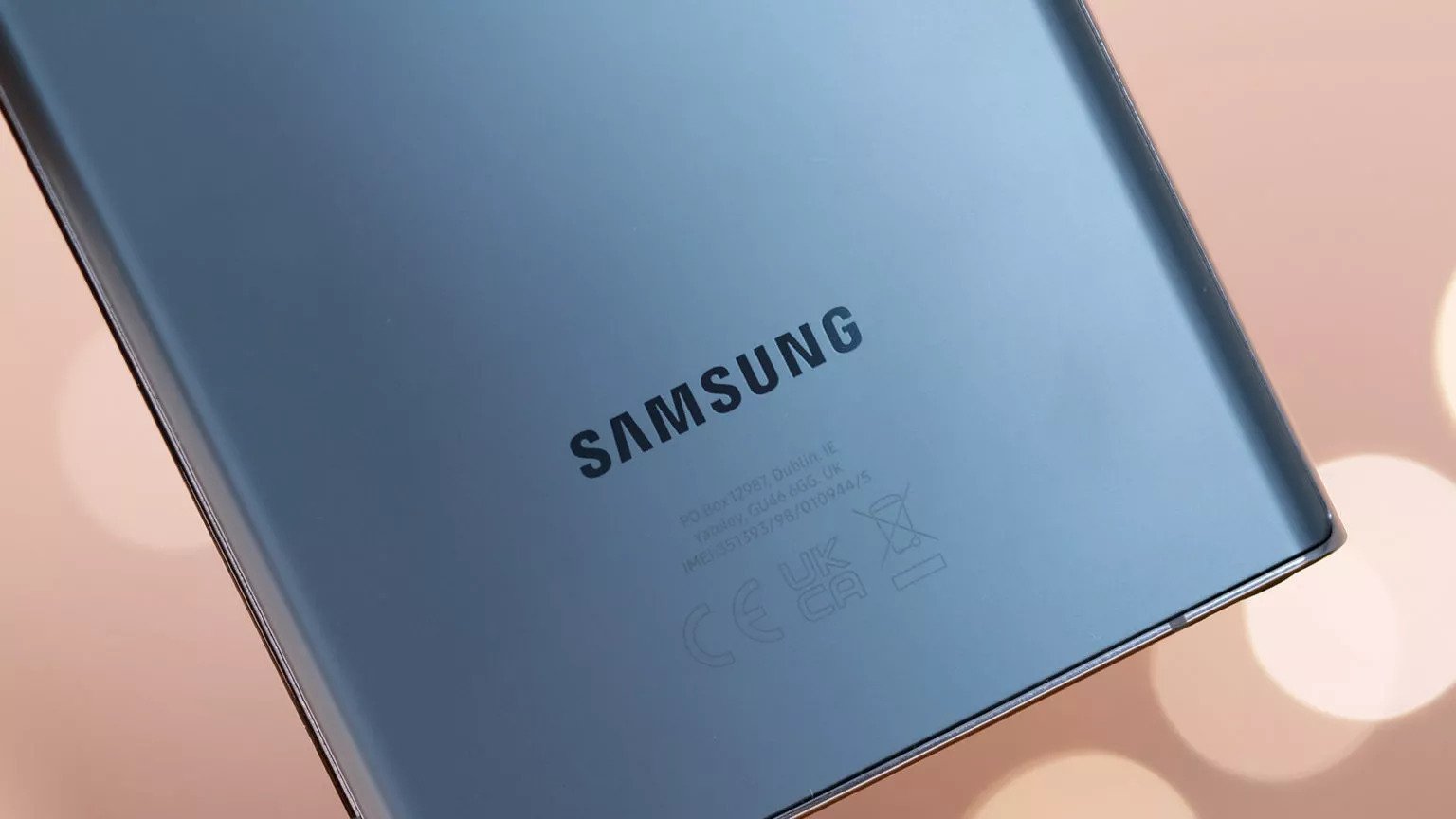
With the ink dry on the Samsung partnership, iFixit started selling first-party repair parts for Samsung phones. It wasn’t long before Wiens started to get concerned, as iFixit wasn’t meeting early sales targets. This was surprising, considering how much traffic iFixit sees for Samsung repair guides.
On top of this, iFixit wasn’t selling enough products to one of its core customer groups: independent professional repair technicians. One of the big reasons for this is the unit limit Samsung put on orders, which was a paltry seven parts per repair shop per quarter. “This was non-viable,” Wiens explains. “Most independent repair shops will do seven Samsung smartphone repairs per day.” Wiens notes that other OEMs partnered with iFixit do not have this limitation.
Despite overwhelming demand for Samsung repair guides at iFixit, parts sales were not hitting targets.
Another problem was the high prices of the parts themselves. This was caused by two root issues. The first is that Samsung forces certain parts to be purchased together, such as the display and the battery. You can’t just buy the display or just the battery — you need to buy both, which come glued together. A repair technician has no choice but to replace both parts, even if the device only needs one, driving up the cost of the repair for both the tech and the customer. Even if a person is going the DIY route, the cost-benefit ratio of replacing two expensive aspects of a phone might not be better than simply buying a new phone altogether. The second root issue for the high prices of Samsung parts is more arbitrary: simply put, the cost of Samsung parts is not in line with the rest of the smartphone industry, and no one knows why.
“I don’t know why Samsung insists on charging so much for service parts,” Wiens says, visibly frustrated. “The prices that we see are out of line with what we know components actually cost to manufacture.” Wiens starts to elaborate but stops himself. He clarifies that he would love to discuss this more, but his contract with Samsung prevents him from doing so. I then asked him if he could say how much more expensive Samsung parts actually are, but he declined again. However, he did have this to say: “I think you can look at the parts pricing we have on iFixit and just look at Samsung parts as compared to Google Pixel parts.”
Samsung's parts pricing is significantly higher than other smartphone brands — and it's unclear why.
Unfortunately, this is tricky to do because iFixit’s partnership with Google is still ongoing, so there are a lot more parts available for its latest phones. For example, iFixit does not offer parts for any phones in the Galaxy S24 series, while there are many different kits available for the Pixel 8 and Pixel 8 Pro. (My colleague, Robert Triggs, recently dug into this data from multiple sources and discovered that Samsung’s repair cost was indeed higher than Google’s, especially for displays and batteries, and it was more prohibitive for cheaper, midrange phones.)
Regardless, Wiens and iFixit tried to work with Samsung to make changes and meet those sales targets, but Samsung wasn’t being helpful. “We had been in regular, very focused negotiations with them since the middle of last year, trying to find a way through to make this thing work,” Wiens says, shaking his head. “But it just wasn’t working. We reached an impasse where it just wasn’t going to happen. And what’s frustrating is you look at a program like this, and there are a dozen different ways that you could iterate and improve on it. But there wasn’t a single idea that we had that we were able to bring to the market.”
With negotiations with Samsung floundering, Wiens had no choice but to terminate the partnership.
On May 23, 2024 — just about two years after launching the Samsung partnership — iFixit published a blog post announcing the program’s termination. As part of the dissolution of the deal, iFixit would no longer supply first-party repair parts for Samsung phones; instead, it relied on independent sourcing of parts, which would include at least some aftermarket parts. It would also no longer create repair guides with Samsung and would go back to developing those on its own or through input from community members.
Not long after this, unrelated to iFixit, two other bits of news popped up related to repairing Samsung phones. Only days after the announcement of iFixit’s dissolved partnership, a leak from 404 Media showed a very concerning contract between Samsung and a repair technician, which instructed them to share customer data with Samsung and to disassemble any phones that arrived for repair that had been modified with third-party parts (Wiens says he had never seen a contract like that before the leak and called some of the contract’s terms “problematic”). Then, a month later, in June, Best Buy ended its pilot program with Samsung that allowed for first-party repairs of Galaxy phones in about 250 Best Buy locations.
I asked Wiens why this was all happening. What is it with Samsung phones that makes them so tricky to repair? Why is Samsung so resistant to making repair easier? And what will it take to fix these problems? As you’d expect, he had a lot to say about these topics.
Samsung phones are simply not easy to repair
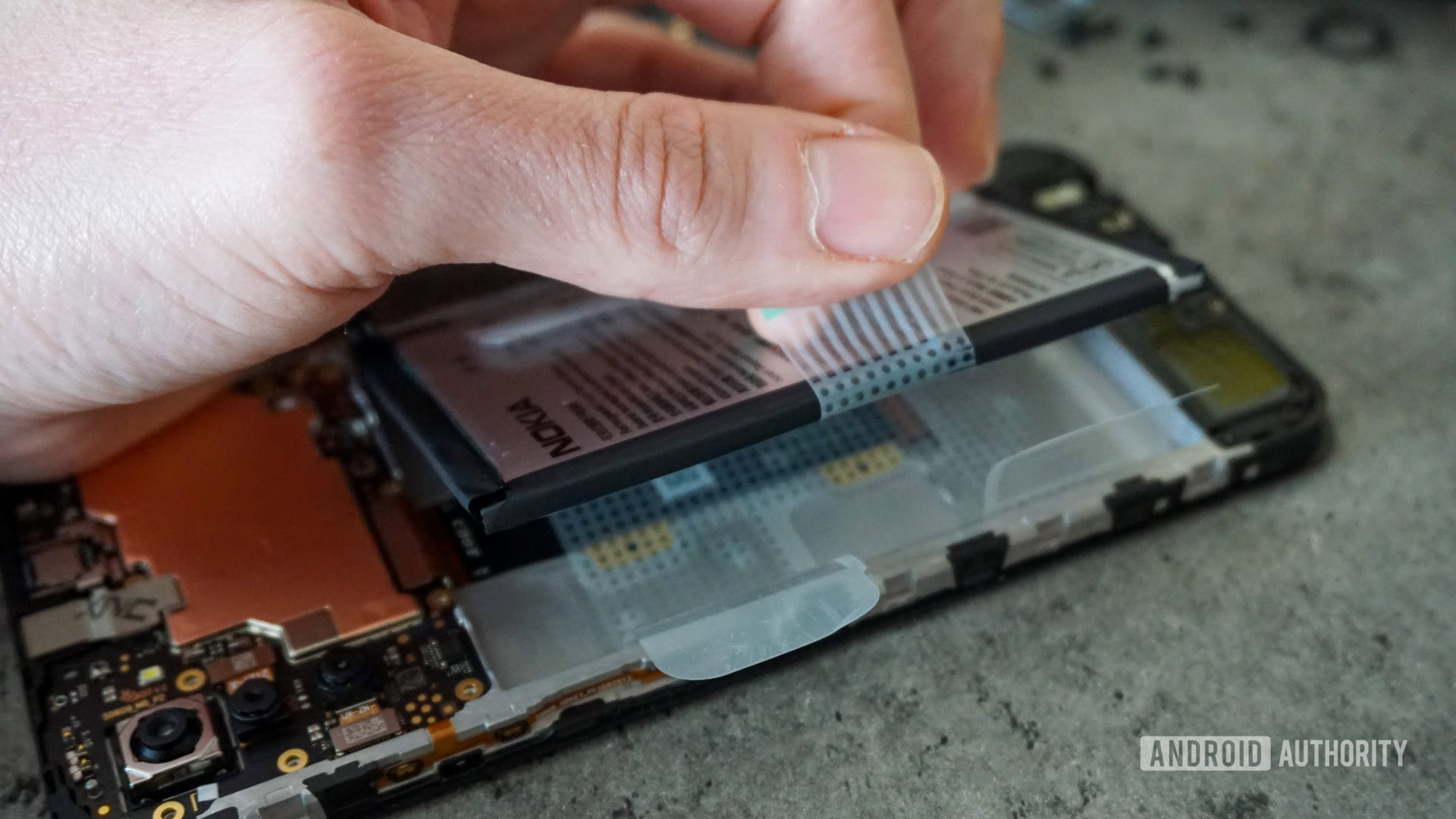
At iFixit, the company dishes out what it calls Repairability Scores. These are scores on a scale of one to ten that give consumers a good idea of how repairable a device might be. Lots of things come into play here, such as the mechanical design of the product itself, parts availability, and the presence/absence of things like “parts pairing,” which is when the software in the device authenticates whether a hardware aspect is genuine. Apple uses parts pairing in iPhones, a controversial practice that prevents the phone from working properly if you install an aftermarket component.
Historically, Samsung phones have received low Repairability Scores from iFixit. This is due to a variety of factors, which Wiens is happy to explain to me.
Samsung phones almost always have low repairability scores from iFixit.
“The biggest problem is the mechanical design [of Galaxy smartphones],” he says. To get into a Galaxy phone, you need “extreme amounts of heat” to melt the glue that keeps everything together. On top of that, the two most common parts in need of repair — the screen and the battery — are glued together, making them incredibly challenging to repair individually without literally melting the screen or putting the battery under potentially dangerous heat stress.
“Additionally,” Wiens explains, “the screen is the last thing you get to when opening up the device.” Because of how Galaxy phones are designed, you must start from the back and work your way forward, which adds a ton of labor time to a repair.
“You can really compare and contrast this to the iPhone’s mechanical design where Apple really has made some marked strides the last few years to redesign the internals of the iPhone to make it easier to repair,” Wiens says. “Apple does parts pairing and a bunch of other stuff that’s problematic, but purely from a mechanical design perspective, the iPhone is an easier-to-work-on device. With Apple’s recent designs, if you want to replace the screen, you can separate the screen from the rest of the device, allowing you to get into the phone from both the front and the back, which is a nice design innovation.”
Samsung phones have been difficult to repair for years, but very little seems to change in this regard with each new generation.
What frustrates Wiens most is that these problems with Galaxy designs have remained relatively unchanged for the better part of a decade. “I’ve lost track of how many times we’ve written a detailed critique of the Galaxy form factor,” he says, waving his hands. “And I think you could look at any teardown we’ve published of their devices in the last ten years, and the devices haven’t changed that much, which is frustrating because why not? Why not make it better? Why not make it easier? Just look at how many Samsung employees are fixing these devices, much less everybody else. I mean, in Samsung’s big offices, they’ve got service centers. They have to fix phones for their own people. And they’ve got their authorized service network. They have to pay warranty costs for people to turn screwdrivers and fix these things. So why not lower your own warranty costs by making phones simpler to work on?”
Wiens also mentions that Samsung gets a few things right. It offers repair parts, for one (even if those parts are inconvenient and expensive), and also supplies technical manuals. But the mechanical design limitations are the biggest reasons Galaxy phones rarely get decent Repairability Scores.
The silver lining, Wiens notes, is upcoming regulations from the EU. In the future, smartphones will need to be easily repairable without requiring an egregious amount of specialized tools, with the battery, in particular, needing to be easily replaceable. “The current Galaxy design is not going to meet [the EU] requirement,” Wiens says, “So Samsung is going to have to change it. I hope they go above and beyond the minimum.”
Samsung repair doesn’t jibe with its software (or green programs)
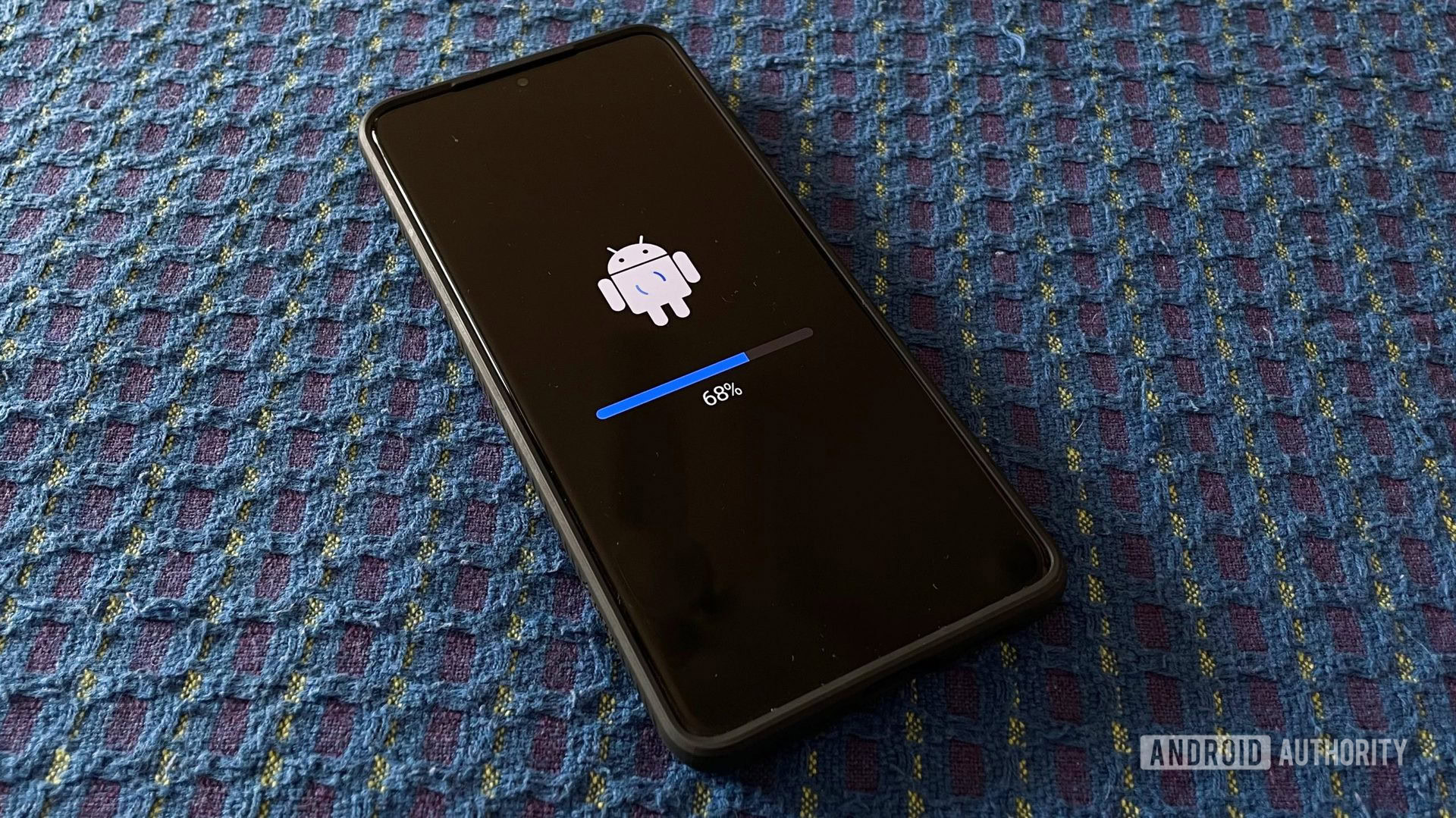
In 2022, right around the time iFixit and Samsung first started discussions for the eventual repair partnership, Samsung surprised the Android world by announcing it would offer five years of software support for most of its major phones. Eventually, Google one-upped Samsung with seven years of updates for Pixels, which Samsung matched for some of its flagships.
As exciting as this is, it makes Samsung’s reputation for hindering repairs of its phones quite confusing. After all, what good is seven years of software support if it’s prohibitively difficult and expensive to repair the physical components inside the phone, especially the battery and display, since those are the most likely to go first?
Samsung offers up to seven years of software support for phones, but what good is that if you can't repair the hardware?
This conflict is not lost on Wiens. He remembers the days when Samsung had the inverse problem. “What’s so funny is that we were getting the opposite constraint years ago,” Wiens says with a chuckle, explaining that Samsung phones used to have removable plastic backs and were much, much easier to repair physically, but Samsung’s software support policy rarely expanded beyond two years. “Back then, people were saying, ‘Well, why would I bother fixing it if I can’t get software updates?’ So now we’ve got it the other way around!”
Not only do these repairability issues hurt consumers, but they also are antithetical to Samsung’s green initiatives, of which the company is extremely vocal. At the company’s microsite related to its environmental policies and strategies, Samsung has this to say:
We consider energy efficiency and resource circularity for our products throughout their entire life cycle. This involves implementing various measures during the stages of sourcing, production, distribution, use, and recycling to reduce our impact on the environment. We take into account resource-saving to ensure that materials are reused, and waste is reduced. We strive to make a difference for the environment through small steps.
Ironically, that same microsite links to the Galaxy Upcycling program, which, as mentioned before, has not been updated since 2021.
Ignoring that, these stated policies don’t really jibe with the evidence we have about how Samsung stifles its own repair ecosystem. In fact, that term — “ecosystem” — is essential for any device repair program to work, according to Wiens.
“Long-lasting products require an ecosystem,” Wiens says. “If you’re missing one nutrient in that ecosystem, the whole thing falls flat.” A thriving smartphone ecosystem, Wiens explains, is one in which you have a robust software update policy with an equally robust physical repair strategy. “You have to do an ‘all of the above’ strategy if you want to move the needle and make phones last longer,” he says.
Ever the optimist, Wiens would work with Samsung again
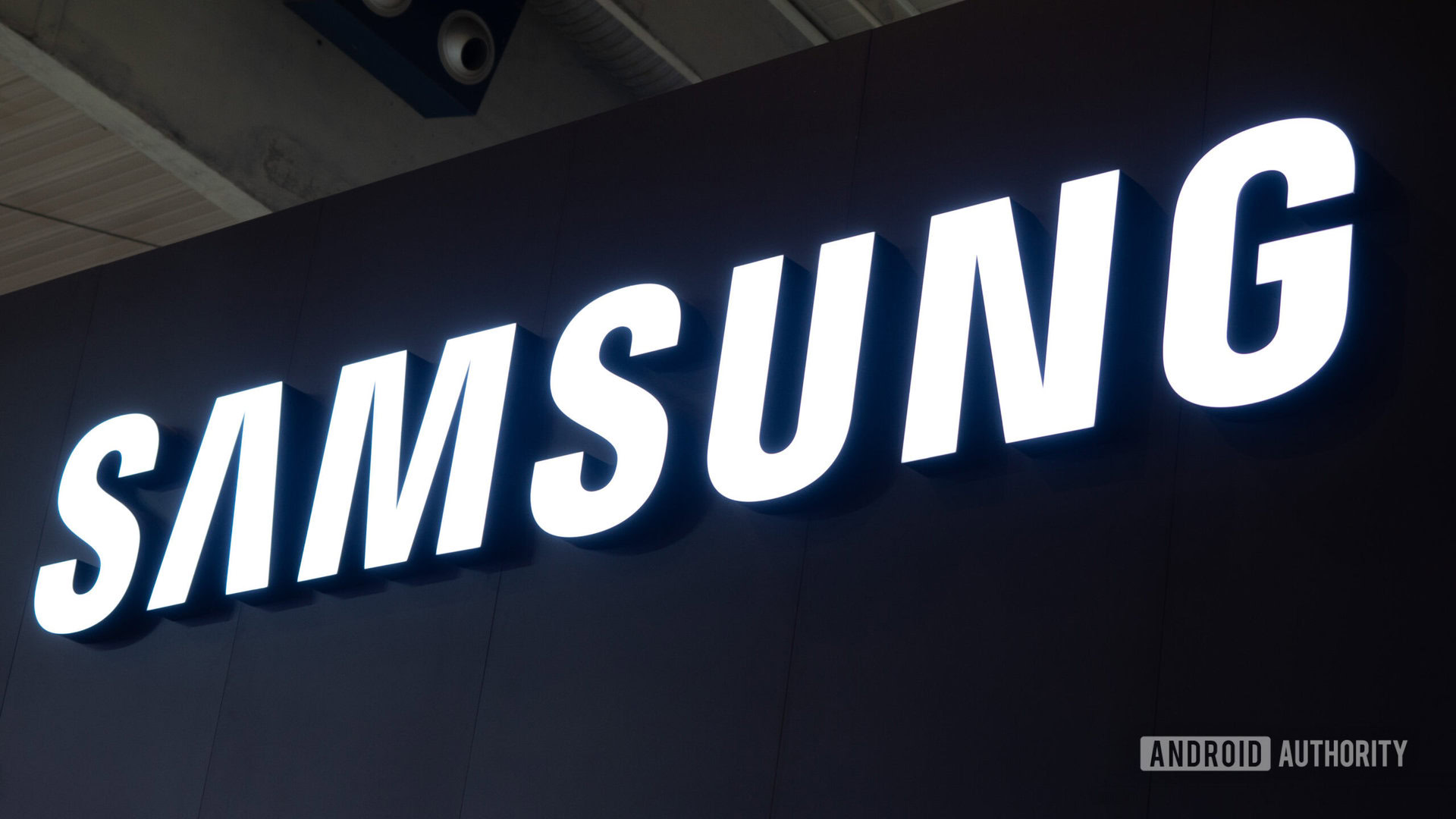
As our conversation is wrapping up, I can’t help but think of the old adage: “Fool me once, shame on you; fool me twice, shame on me.” Wiens was fooled twice by Samsung, first with Galaxy Upcycling and again with this failed repair partnership. Surely, this is the last time he’ll be fooled by the company… right?
I asked Wiens if he would reject an opportunity to work with Samsung again, and he didn’t say no. “That’s a great question,” he says, laughing. “You know, we would think very seriously about whether it would make sense to do business with them again.” After a brief pause, he continues, “It certainly has not been fun so far.”
Well, what would Samsung need to do to get iFixit’s support again?
Wiens hasn't totally ruled out working with Samsung again, but a lot would need to change for that to happen.
“Quite a lot,” Wiens says, laughing some more. “It just comes down to demonstrating a commitment to making products last a long time. We went into this with a lot of optimism and laid out every opportunity to expand this thing and make it work. But at the end of the day, you have to provide oxygen to the ecosystem, particularly the independent repair professionals. You have to provide oxygen to those technicians, but in this case, it was clear that [Samsung] did not want to support an independent repair ecosystem.”
Even if Samsung doesn’t want to do this, Wiens doesn’t see any reason why the company can’t simply make its phones easier to repair. The Fairphone 5, for example, is one of the few phones to get a perfect 10/10 Repairability Score from iFixit, proving that creating an easy-to-repair phone is not impossible.
“A repairable phone is really an opportunity to innovate,” Wiens says. “Companies like Samsung have some of the most capable product designers and mechanical engineers in the world. Find a way! You can do it, but you just have to focus on it and prioritize it. We are on the ground floor of repairable smartphone design. The form factor is pretty locked in — we know what smartphones are going to look like in three years. We don’t know what the internals are going to look like, so let’s put our innovation there.”
This failed partnership hasn’t changed business at iFixit, though. Wiens is as focused as ever on helping people keep their devices working for as long as possible. “iFixit only exists to help people fix things,” he says. “If somebody out there is not successfully fixing a thing, then we didn’t do our job.” In other words, iFixit will continue its strive to never take “broken” for an answer — even if it had to relent this one time.
